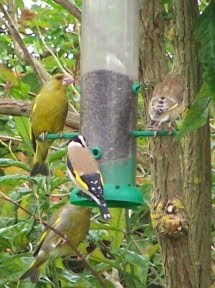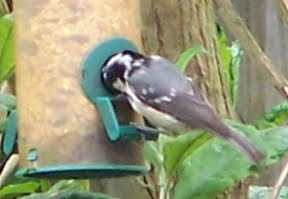The most invasive of these are the creeping buttercups, which while they look pretty would, have found their way into every flowerbed. Other less than welcome plants include the sticky weed (aka cleaver or goose grass) and the bindweed, both of which will climb up and overwhelm other plants in the garden if allowed.
Growing at the base of the Silver Birch is hedge woundwort. While it looks a little like a stinging nettle it doesn't sting, the flowers are a reddish purple and the plant has a distinctive smell.

Another flower that has found its own way into the garden is Herb Robert. It doesn't have deep roots and will grow in the shallowest of soil. It is a type of geranium, related to storksbill.

Around the pond are some patches of white clover that the bees seem to like, and hidden among some taller plants the small yellow flowers of lesser trefoil. In the lawn at the front of the house the usual daisies and dandelions manage to flower when the the lawn hasn't been cut. Occasionally I'll miss a weed in the flower beds, such as the prickly sow thistle.
Willowherb species haven't quite flowered yet, while other plants such as the wood avens that grow around the front of the house along with forget-me-knots have already finished flowering.

I'm not all that good at identifying all the plants that grow in the garden compared to identifying mammals and birds, despite the fact that unlike they animals they don't run or fly away. I suppose this is partly because there are so many different species of plant, and not all of them are native British species. The following is a short list of some those I managed to identified today:
- Herb Robert - Geranium robertianum
- Wood Avens or Herb Bennet - Geum urbanum
- Creeping Buttercup - Ranaculus repens
- White clover - Trifolium repens
- Hedge woundwort - Stachys sylvatica
- Cleavers (Goosegrass or stickyweed) - Galium aparine
- Silverweed - Argentina anserina
- Welsh poppy - Meconopsis cambrica
- Forget-me-not - Myosotis spp.
- Common daisy - Bellis perennis
- Prickly sow - thistle Sonchus asper
- Dandelion - Taraxacum officinale
- Lesser trefoil - Trifolium dubium
- Common mallow - Malva sylvestris
- Willowherb - Epilobium spp.
- Cowslip - Primula veris
- Meadowsweet - Filipendula ulmaria
- Dock or sorrel - Romex spp.





